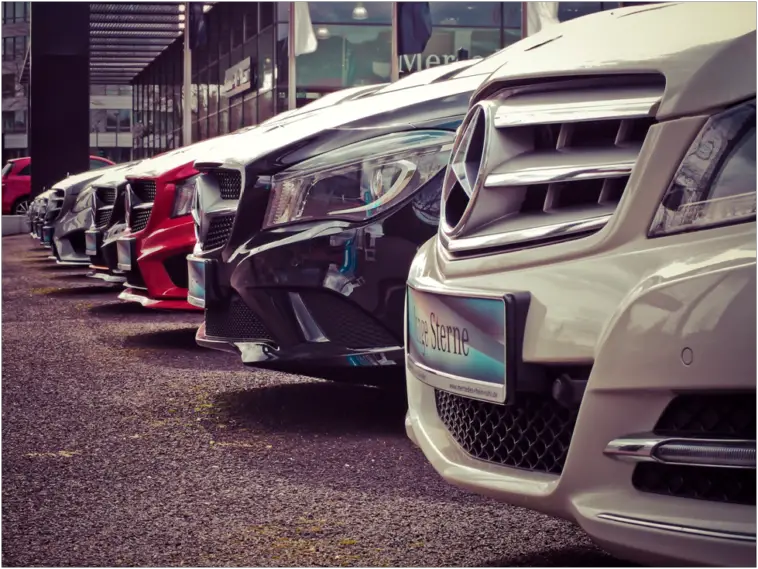
When you’re considering a new car, there’s a good chance your biggest consideration is whether it’s better to buy or lease it. On the surface, leasing typically seems like a better idea. Lower monthly payments and a new car every few years are highly favorable, especially when considering the costs of a new car. But the truth is the decision to lease or buy is a tough call.
There are several factors, both personal and financial, that you should consider when deciding whether to buy or lease a car. In this article, we’ll tell you everything you need to know to make the right decision.
How Buying a Car Works
Buying a car is fairly straightforward. Either you purchase the vehicle outright, or you finance it (pay for it with a car loan). Since it is an investment that costs tens of thousands of dollars, financing a vehicle is much more common than paying for it upfront. When you take out a car loan, the process looks like this:
- You make a down payment, usually around 10% of the car’s total cost.
- You’ll then make monthly payments for the remaining balance owed on the loan.
- Depending on your credit score, loan terms, and other factors, your interest rate will vary from 4% to 10%. The average loan rate is 6.58%.
- After you have paid off your entire loan, the car is yours to keep.
Once you own the car and don’t have to make payments on it, you are free to keep it as long as you like (or sell it at any time).
How Leasing a Car Works
Leasing a car works in much the same way as taking out a loan, but with some key differences. With leasing, you’re essentially renting the car from your dealership for a specific period of time (usually two or three years). Here’s how it looks:
- You make a down payment, usually around 10% of the car’s total cost.
- You then make monthly payments for the duration of your lease agreement.
- The dealership will limit how many miles you can drive during your lease, usually 36,000 to 45,000 miles over three years.
- At the end of the lease, you can either buy the car from the dealership or return it and walk away.
If you choose to buy the car during the lease end process, you will be responsible for any additional costs above its original purchase price.
Pros and Cons of Leasing Your Car
Although fewer customers are leasing their cars, the relatively high average cost of buying one (over $48,000 as of March 2023) makes it a viable option for some. Especially since the pandemic created more remote jobs, the restrictive mileage limits on lease agreements aren’t as much of an issue.
The Perks of Leasing a Car
One major advantage of leasing is driving a brand-new vehicle without worrying about long-term maintenance or depreciation. Instead, leasing allows you to experience the best years of a car’s life while giving you access to the latest features, technology, and safety innovations.
Leasing can also be a financially savvy option; it enables drivers to enjoy luxury and high-end vehicles at a more affordable cost. This elevates your driving experience and eliminates the stress of dealing with fluctuating trade-in values or the hassle of selling the car when it’s time for a change. For business owners, leasing can offer additional tax benefits, making it an even more appealing choice financially.
The Drawbacks of Leasing a Car
Although leasing seems like it can save you money, it can actually be more expensive in the long run since you’re paying for the vehicle during its period of highest depreciation. And if you lease every car for the rest of your life, that means never-ending monthly payments.
Lease contracts also entail mileage restrictions. Those who don’t use their car much end up paying for miles they don’t use, and anyone who needs more flexibility in their driving habits won’t be able to meet the requirements of a lease contract. A car lease can also lead to extremely high costs in the event of any sort of damage, early termination, or mileage overage.
Pros and Cons of Buying Your Car
Buying a car is the traditional and most popular route, but there are some important pros and cons to consider.
The Perks of Buying a Car
One major benefit to buying your car is that you have complete ownership over it, with no limits on mileage or restrictions on how long you can keep it. Since you don’t have to return it to anyone, you also won’t have to fix it right away if something damages it like you would with a lease.
Aside from having equity in your vehicle, you can customize it as you see fit. You can add aftermarket parts and accessories or paint the car whatever color you like. Most importantly, financing your vehicle means long-term cost savings; once you’re finished making payments, you’ll no longer have to worry about it as a monthly expense.
The Drawbacks of Buying a Car
Cars lose about 20% of their value in the first year of ownership. For buyers who take out long-term loans (i.e., 60 to 84 months), this could mean owing more on the car than it’s worth before the loan is paid off.
As cars age, they also require additional maintenance and upkeep, especially if they’re driven frequently. Lessees don’t have to worry about bearing many of these costs (if any) because they only use the car for the first few years of its life.
When you’re ready to sell your old car, you will be responsible for any additional costs associated with selling it. Depending on where you live, you may have to pay a sales tax or registration fee when transferring the title of ownership as well.
The Bottom Line: Leasing vs. Buying a New Vehicle
Whether you choose to buy or lease your next car is ultimately up to you and your personal needs. Leasing works best for those who want to drive a brand-new car with the latest features without worrying about long-term maintenance or depreciation. Owning the vehicle outright entails long-term cost savings, but could also result in significant depreciation losses and unexpected costs down the road.
It is best for you to understand both options ahead of your decision. Before choosing, research your financing options, compare available lease and loan terms, and calculate associated monthly payments so that you can make an informed choice on the best route for you.




